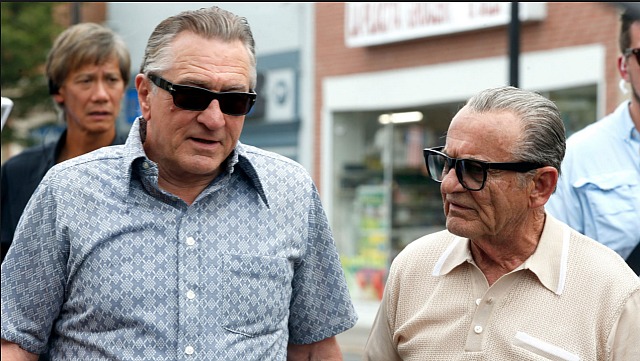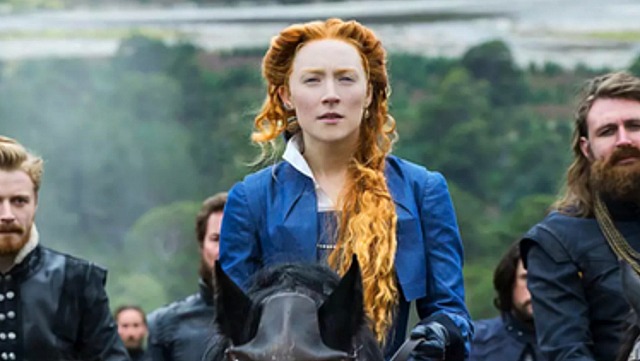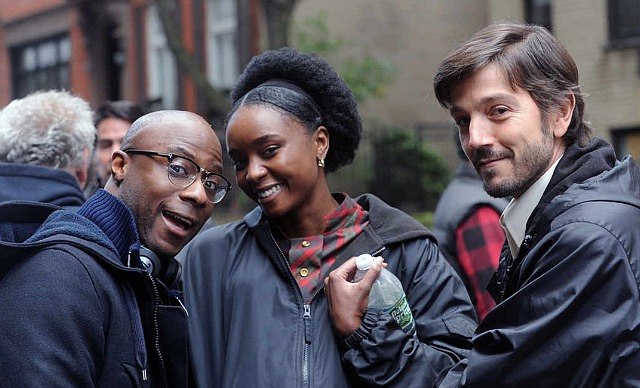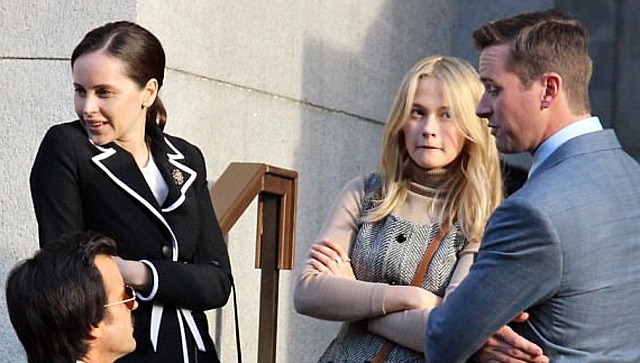I’ve been spitballing 2018 releases for several weeks, but now I’m attempting to focus on films that will probably stand out in terms of great reviews, Best Picture nominations and award campaigns.
It’s now March 6th — less than six months away from the start of the ’18/’19 award season. And right now (stop me if you’ve read this before) eight films are the leading Best Picture hotties — Martin Scorsese‘s The Irishman, Adam McKay‘s Back Seat, Damien Chazelle‘s First Man, Barry Jenkins‘ If Beale Street Could Talk, Bryan Singer‘s Bohemian Rhapsody, Bjorn Runge‘s The Wife, Mimi Leder‘s On The Basis of Sex, and Josie Rourke and Beau Willimon‘s Mary, Queen of Scots. (8)
Tell me which others should be included….please. Richard Linklater‘s Where’d You Go, Bernadatte? Terrence Malick‘s Radegund? Jason Reitman‘s The Front Runner? Felix von Groeningen‘s Beautiful Boy? Yorgos Lanthimos‘ The Favourite (reign of Queen Anne in early 17th Century)? Joel Edgerton‘s Boy Erased starring Lucas Hedges? (6)

Robert De Niro, Joe Pesci in Martin Scorsese’s
The Irishman (Netflix).

Saoirse Ronan in
Mary, Queen of Scots.

Director Barry Jenkins (l.) during filming of
If Beale Street Could Talk.

Felicity Jones (l.), Armie Hammer (r.) during filming of Mimi Leder’s
On The Basis of Sex.
Upmarket Genre: 1. Luca Guadagnino‘s Suspiria (Dakota Johnson, Chloë Grace Moretz, Tilda Swinton, Mia Goth); 2..Steve McQueen‘s Widows (Viola Davis, Cynthia Erivo, Andre Holland, Elizabeth Debicki, Michelle Rodriguez, Daniel Kaluuya, Liam Neeson, Colin Farrell); 3. Ron Howard‘s Solo — A Star Wars Story (Alden Ehrenreich, Woody Harrelson, Emilia Clarke, Donald Glover, Thandie Newton); 4. Lynne Ramsay‘s You Were Never Really Here; 5. 20. Stefania Solluima‘s Soldado (Benicio del Toro, Josh Brolin, Catherine Keener — Columbia, 6.29.18).; 6. Steven Spielberg‘s Ready Player One (Tye Sheridan, Olivia Cooke, Ben Mendelsohn, T. J. Miller, Simon Pegg, Mark Rylance); 7. Jennifer Kent‘s The Nightingale (19th Century Australian revenge saga) w/ Aisling Franciosi, Baykali Ganambarr, Sam Claflin, Damon Herriman, Ewen Leslie. (8)
Likeliest Best Foreign Language Feature Contenders: Alfonso Cuaron‘s Roma (Marina de Tavira, Marco Graf, Yalitza Aparicio, Daniela Demesa, Enoc Leaño, Daniel Valtierra); Asghar Farhadi‘s Todos lo saben (Spanish-language drama w/ Penelope Cruz, Javier Bardem, Barbara Lennie, Ricardo Darin, Inma Cuesta, Eduard Fernandez Javier Camara);Laszlo Nemes‘ Sunset (a young girl grows up to become a strong and fearless woman in Budapest before World War I), w/ Susanne Wuest, Vlad Ivanov, Björn Freiberg; Paolo Sorrentino‘s Loro (life of Silvio Berlusconi); Nuri Bilge Ceylan‘s The Wild Pear Tree, and Olivier Assayas‘ E-book. (6)
Possible Strongos: Jacques Audiard‘s The Sisters Brothers (Jake Gyllenhaal, Joaquin Phoenix, Rutger Hauer, Riz Ahmed, John C. Reilly); Felix von Groeningen‘s Beautiful Boy with Steve Carell and Timothy Chalamet; Xavier Dolan‘s The Death and Life of John F. Donovan (Kit Harington, Natalie Portman, Jessica Chastain, Susan Sarandon, Kathy Bates); Spike Lee‘s Black Klansman (John David Washington, Adam Driver, Laura Harrier, Topher Grace, Corey Hawkins — Focus Features). (4)
Read more









